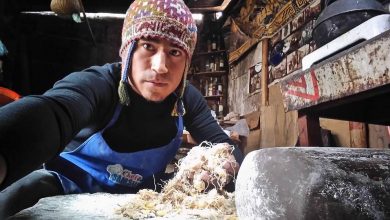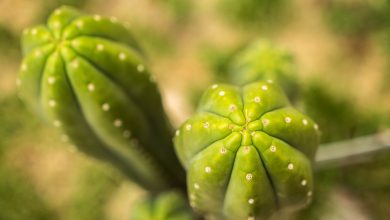San Pedro and Organ Pipe Cactus, a Comparison

Looking through photos of Peruvian volcanoes last week, I was surprised to see tall cactus growing in columns. They resembled the Organ Pipe cactus that grow in the American Southwest, a very distinctive plant with spines. There are areas of dense forestation with the Organ Pipe cactus in Arizona. I was very excited to see a familiar plant growing so plainly in the pictures.
As I looked closer and did a little research, I realized that the cactus in Peru was not actually the same, although it bore a great resemblance. Looking up the two plants, I discovered distinct differences in them.
The Peruvian cactus is the San Pedro cactus (Trichocerus pachanoi or Echinopsis peruviana) a fast growing columnar cactus that grows in the Andes. The Organ Pipe cactus (Stenocereus thuberi) is slow growing and is found in the Sonoran desert.

They both have beautiful flowers and belong to the genus ‘Cereus’, which means elongated cactus body – from the Greek word for ‘wax’ or ‘torch’. In the length of the spines, and the shape of the columns, the cacti are differentiated.
Other differences run more than skin deep.The Peruvian Trichocerus pachanoi is known for the alkaloids that it produces particularly near the skin. The plant was valued for the psycho-reactive qualities of mescaline and other alkaloids. The use of the San Pedro plant dates back thousands of years, however, when the conquistadors arrived they banned the use of the plant. In the American Southwest, peyote is commonly used as a psycho reactive sacramental drug to enhance a person’s senses and sense of being.
The drug is very bitter and causes nausea for hours. Some people take it as a powder in a capsule to avoid the bitter taste, but traditionally the stems of the San Pedro are boiled and the liquid drained. Chris Kilham, Medicine Hunter says the plant is also called St. Peter’s cactus, because in Christian tradition St. Peter holds the keys to heaven and in Andean tradition, San Pedro cactus is the key to heaven. He describes his experience:

“I felt myself slipping away, still sitting upright, still perfectly aware of where I was, but also taking off to some distant place at the very same time, as though swept by an invisible current that pulled me steadily into a realm of vast geometries, of vaulted space filled with light and color and a pervasive sense of being completely connected to all things throughout all time, without beginning or end. I bathed in this experience even as a fine cool mist from the ocean settled in the night air….
Hours later as the effects of the San Pedro waned, I observed that my sight was more clear, and my hearing was more acute. I felt the night air with greater intensity, and I could smell the aroma of salt from the sea. I expected these effects to wear off, but in fact my senses remained more finely tuned for several days. I had the experience of being cleansed, lighter in my body and mind, freed of subtle stress.”
The Organ Pipe cactus produces a fruit called pitaya. It is beautiful and full of seeds with a flavor described as a cross between a watermelon and a cucumber.

The San Pedro cactus produces a seed pod, but it appears pithy and white with seeds rather than the deep red of the Organ Pipe. The cactus fruit is commonly eaten in Mexico and the Southern United States, often used in Agua Fresca.
Despite their seeming sameness, the two plants had very different aspects.The agua fresca produced by the pitaya dulce was simply sweet and heavenly, while the San Pedro drink was a doorway to another dimension.




